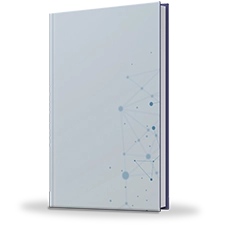Automotive Metal Market Analysis :
Automotive metal is a raw material in the form of a metal, which is used to manufacture various car components, vehicle body, wheels, chassis, panels, and doors. Various kinds of metals, such as steel, aluminum, and magnesium, are used to manufacture automotive vehicles.
The dynamic demand for automotive vehicles and the need to make lightweight automotive vehicles are the major factors that contribute to the growth of the automotive metal market. Additionally, increase in population in the APAC region also drives the demand for automotive metals.
COVID-19 scenario:
- As the world is fighting the current pandemic situation, industries have been severely affected. Industries have shut and production processes have been halted due to the nationwide lockdown.
- The automotive industry has been adversely hit by the current pandemic situation. There is lack of availability of raw materials and manpower while the manufacturing processes have been halted.
- A significant reduction in demand for automotive vehicles can be witnessed, owing to not being considered as essential goods. This has led to a prominent negative growth in the automotive metal market.
Top impacting factors: Market scenario analysis, trends, drivers, and impact analysis:
The global demand for vehicles is ever increasing, which is one of the key factors responsible for the growth of the global automotive metal market. In addition, the availability of raw materials in abundance also adds to the growth of the global automotive metal market. Increase in focus of governments to improve the situation regarding manufacturing capabilities in developing as well as developed countries is another reason for the growth of the global automotive market. A trend that has been observed is that there is constant development in technologies to manufacture automotive vehicles. R&D activities for the development and enhancement of these technologies aim to make vehicles light in weight and have cost-effective materials. This is one of the major trends that drive the growth of the automotive metal market.
Aluminum and magnesium are the product types that are expected to grow the fastest, owing to their lightweight attribute. This attribute has led to increase in demand for aluminum and magnesium in the manufacturing of car components, power trains, body structure, wheels, electrical wiring, and engine parts. In addition, the malleability of aluminum helps vehicle designers to attain maximum benefits by designing the vehicle accordingly. Aluminum has excellent energy absorption power in case of a crash and has high durability. Using aluminum in automotive manufacturing also results in less carbon footprint, which is healthy for the environment. Under the steel segment, extensive research has been carried out to alleviate the weight of automotive vehicles and make them cost-effective as well. In recent times, Advanced High- Strength Steel (AHSS) has been making up for about 60% of the automotive vehicle’s body structure, making it lightweight with optimized vehicle design that improves safety and fuel efficiency. It also helps to reduce the emission of greenhouse gasses released from vehicles. Furthermore, steel has high recyclable properties. Regulations regarding the end life of vehicles in countries, such as Japan, India, and South Korea, are expected to increase the demand for steel in the manufacturing of automotive vehicles. As the demand for automobiles is very dynamic and ever-increasing, it also fuels the demand for automotive metals.
However, the automotive metals market faces some restrictions in terms of growth as there are substitute raw materials available such as carbon fiber and plastic.
Regional analysis:
High demand is witnessed in the passenger car segment in Asia-Pacific, North America, and Europe, and it is anticipated to positively affect the automotive metal market. As there is a lot of awareness among consumers, they are willing to spend more on vehicles that provide better quality, durability, and long life. This has led manufacturers to constantly invest in R&D to innovate vehicles that meet the demand. Consumer preference, government regulations & policies, and environmental regulations also drive the demand in the APAC region. North America is another region, which has a major share of the automotive metal market. Initiatives taken by the government regarding vehicle fuel efficiency and reducing the carbon emissions are driving the automotive metal market. Moreover, the APAC countries and the U.S. are facing increasing population, rapid urbanization, and industrialization. In addition, changing lifestyles and increasing disposable income of consumers are expected to increase the demand for automotive metals. In countries, such as India, Japan, and China, majority of the manufacturing facilities are set up. These factors are estimated to impact the automotive metals market in a positive manner.
Key benefits of the report:
- This study presents the analytical depiction of the automotive metal market along with the current trends and future estimations to determine the imminent investment pockets.
- The report presents information related to key drivers, restraints, and opportunities along with detailed analysis of the automotive metal market share.
- The current market is quantitatively analyzed to highlight the automotive metal market growth scenario.
- Porter’s five forces analysis illustrates the potency of buyers & suppliers in the market.
- The report provides a detailed analysis based on competitive intensity and how the competition will take shape in coming years.
Questions answered in the automotive metal market research report:
- Which are the leading market players active in the market?
- What are the current trends that will influence the market in the next few years?
- What are the driving factors, restraints, and opportunities of the market?
- What are the projections for the future that would help in taking further strategic steps?
Automotive Metal Market Report Highlights
| Aspects | Details |
| By Product |
|
| By Application |
|
| By Industry Vertical |
|
| By Region |
|
| Key Market Players | Hyundai Steel Co. Ltd., Nippon Steel, JFE Steel Corp., Tata Steel, ThyssenKrupp, POSCO, China Steel Corp., Bao Steel, United States Steel, Nucor, JFE, JSW Group, ArcelorMittal SA, HBIS, HYUNDAI Steel |
Loading Table Of Content...



